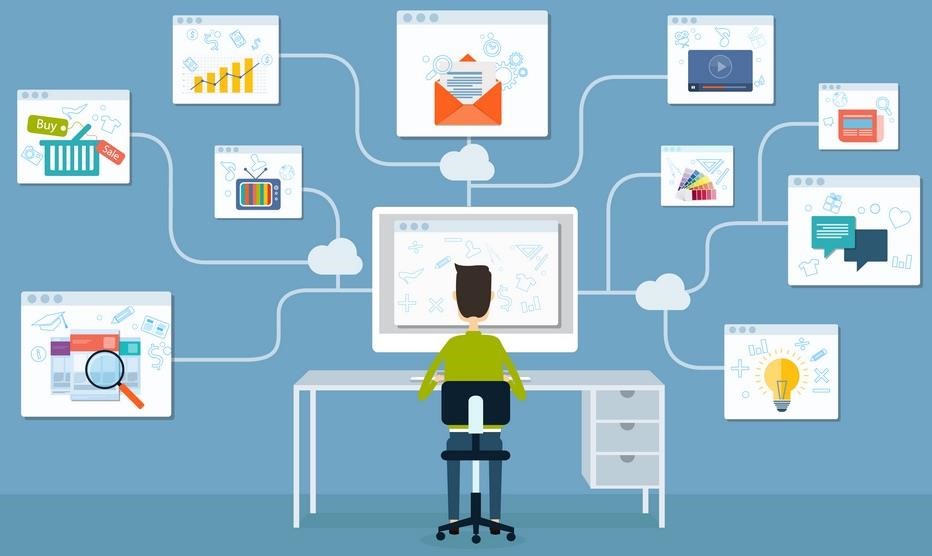
“An enlightened nation is always most tenacious of its rights,” Samuel Harrison Smith, 1797-
By Rafaela Prifti-Community leaders and their state and federal partners need to address the situation of digital segregation that persists across metropolitan America. For most, the divide between urban and rural parts of the country is an indicative of disparity. Yet, the Census Bureau’s American Community Survey (ACS) data indicates that: “The majority of digitally disconnected households live in metropolitan areas, and the gaps are especially large when comparing neighborhoods within the same place. Effectively, some residents live in digital poverty even as their neighbors thrive.”
School districts across the country were caught unprepared when lockdown rules went into effect in the spring of 2020. When remote learning began, there were variations of hours of live online instructions which were reduced to a few hours for each of the main subjects a week. Soon it became clear that even with districts providing free devices to students of low income families, this form of schooling wasn’t going to work for them. Today’s digital economy is out of reach for far too many people who live in neighborhoods with no access to internet connection and free WiFi. Students are required to log on to their daily class or complete the assignments on Google Classroom account. The satellite connection is slow and comes with such a low data cap that it quickly exceeds within a week or two. They can’t afford to buy more data. With the shift to remote instructions, the haphazard internet access and poor service mean that if the links for the class change at the last moment and when students don’t receive the message, they sit in their virtual space and miss the class. Society’s attention to the students of low income households has always been spotty, but now they have become invisible behind closed doors, while we stay home to flatten the curve, according to research.
The United States was a pioneer in universal education. Free of the British upper-class’ fear that educating the working class endangered their rule, education was seen as a means to alleviate poverty in growing cities across the new nation. In the early decades of the 19th century, “district schools” mixed children of all ages. History records show that “coastal cities had a few “charity schools” for the urban poor, supported by churches and philanthropists aiming to break the generational cycle of poverty. State and local governments in the North and the Midwest began authorizing taxation to pay for public schools. For the reformers, creating a school system that would be used by all children was the best argument in support of taxes,” while the South lagged behind in building public schools. Time and time again history shows the consequences of failing to provide that basic good. In 1954, The Supreme Court in Brown v. Board of Education ruled against school segregation and districts across the South threatened to close public schools to avoid integrating them.
In 2020, public health advisers, who supported lockdowns to slow the spread of the coronavirus in the spring, noted that the American Academy of Pediatrics favored school reopening based on the infection rates of children. CDC guidelines provided a framework with recommendations for wearing masks. Counties and districts across the board listed steps to reduce transmission risk at schools such as improve air quality through ventilation or increase air circulation from outdoors, installing air purifiers. The hybrid model of teaching was introduced to combine in-person with online classes. The declaration of President Trump and Secretary of Education Betsy DeVos to pressure the governors to open schools added a political element. The push for decisions to be made locally had a negative impact. Teachers’s Unions reacted by noting concerns about lack of funding for protective gear and testing. Studies published data collected from other countries showing that children were at high risk of contracting the virus, other data showed that the virus had far less effect on younger children. Nationwide, the pandemic has had a disproportionate effect on Black and Hispanic communities. The decision was not driven only by data. “Across the country, some 35 of the 50 largest districts opted for a fully remote opening, as did most large cities, with the notable exception of New York, which announced a hybrid approach and a delayed start. A study by the Brookings Institution found that school districts’ opening decisions correlated much more strongly with levels of support for Trump in the 2016 election than with local coronavirus case levels.“
Schools were opening all across Europe, and many parts of the US despite the fact that their test-positivity rates were higher than the places that kept the schools closed. In Georgia, Florida and Texas many schools had been open since mid-August, despite reports of school outbreaks as COVID-19 case numbers and hospitalization rates generally continued to decline from their summer highs.
The gap between public and private education widened in the time of the pandemic.Prompted by lack of trusted information, elite private schools hired extra teachers to shrink class sizes, set up tents for outdoor instruction and installed expensive audio-visual systems in classrooms to allow teachers to simultaneously teach students in class and at home. Unconvinced that young kids would sit through hours of online instruction, parents removed them from the public school system. The case of the New York City district is watched closely by the school system ready to apply the mix model. For the disadvantaged children and students of low income families, schools provide a safe environment. In addition to digital segregation in urban community households, remote and online classes are no substitute for in-person teaching and social interaction.